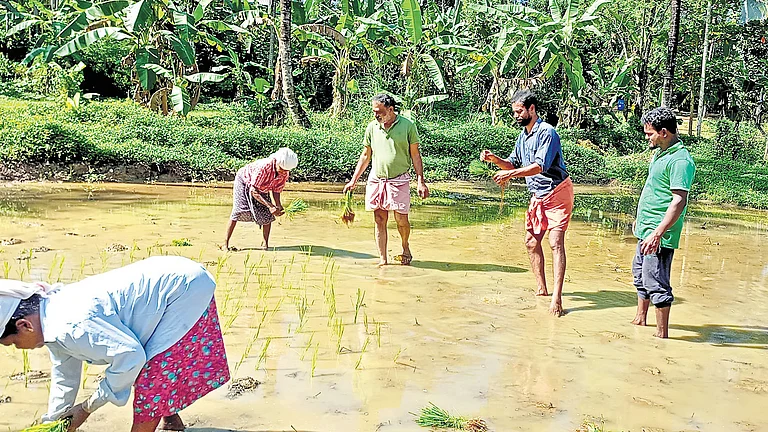
Travelling along the Vagamon-Upputhara Road in Idukki, one would get to see many tourist vehicles turning onto a byroad that seems to be a kind of run-down muddy road leading to a quarry. But why would these tourists go to a quarry? Well, this former quarry has now been turned into an agri-tourism spot by the enterprising owner.
And if one is to count the people thronging the spot, it can be seen that the farm is doing quite well. KPM Farm has gained fame for its fish farm that has Japanese Koi, Tilapia, and Gold fish being reared in the huge reservoir created due to quarrying.
If KPM Farm has turned a former quarry into an agri-tourism spot, Kabeer T’s Kathir Biodiversity Park at Pookkottumpadam in Nilambur, has brought a big change by turning five barren acres into a thriving farming oasis. His farm is a harmonious blend of flora and fauna. Another thriving example of agri-tourism is the Farm Pathayapura at Karakode in Kasaragod’s Madikkai panchayat.
These are just a few examples from the over 400 units that have been started in the state under the Responsible Tourism Mission. According to Rupesh Kumar K, State Coordinator of Kerala Responsible Tourism (RT) Mission, under the Agri Tourism initiative, 983 persons have been trained and of the 454 units that were started under the Kerala Agri Tourism Network, 103 are working well.
Speaking to TNIE about the network, he says, “In an era where sustainability is no longer a choice but a necessity, Kerala has emerged as a pioneer by intertwining its agricultural heritage with responsible tourism. The Kerala Agri Tourism Network, a visionary initiative spearheaded by the Kerala Responsible Tourism Mission Society (KRTM), is redefining how tourism can become a tool for rural empowerment, environmental stewardship, and cultural celebration.”
The innovative model goes beyond conventional sightseeing. It offers tourists an opportunity to connect deeply with the land, the people who cultivate it, and the stories rooted in Kerala’s agrarian landscapes. “At its core, the network aims to uplift the farming community by transforming their farms into vibrant, visitor-friendly tourism spaces,” he adds.
As Kabeer T, of Kathir Farm, explains, “The agri tourism initiative has come as a boon not only to the farmers but also to those living around the farm. Just take the case of our farm. We have employed 15 people from the panchayat where our farm is located.
Besides, direct employment, Agri Tourism provides indirect means of livelihood for those close by. For example, when we run out of ingredients or produce, it is sourced from the farmers nearby. In this way, they too earn money.”
According to Prasanna P, of Farm Pathayapura, more and more people have been thronging to agri tourism spots. “We have been doing very well since we began the venture in 2022. The pandemic had caused a slump. But once we converted our farmland into an agri tourism spot, there has been no looking back,” she adds.
According to Rupesh, the Kerala Agri Tourism Network was launched with a clear set of transformative goals. “Integrate farmers actively into Kerala’s dynamic tourism sector, convert agricultural lands into eco-friendly and interactive tourism destinations.
Another aim was to empower rural communities socio-economically, especially women and marginalised groups, while providing transparent, sustainable, and meaningful experiences for travellers seeking authentic rural life,” he adds.
“Kerala’s Agri Tourism Network is rapidly evolving into a model for rural sustainable tourism, not just in India but globally. International bodies such as the Food and Agriculture Organisation (FAO), UN Tourism, and UNDP are recognising its potential for replication in other regions,” he says.